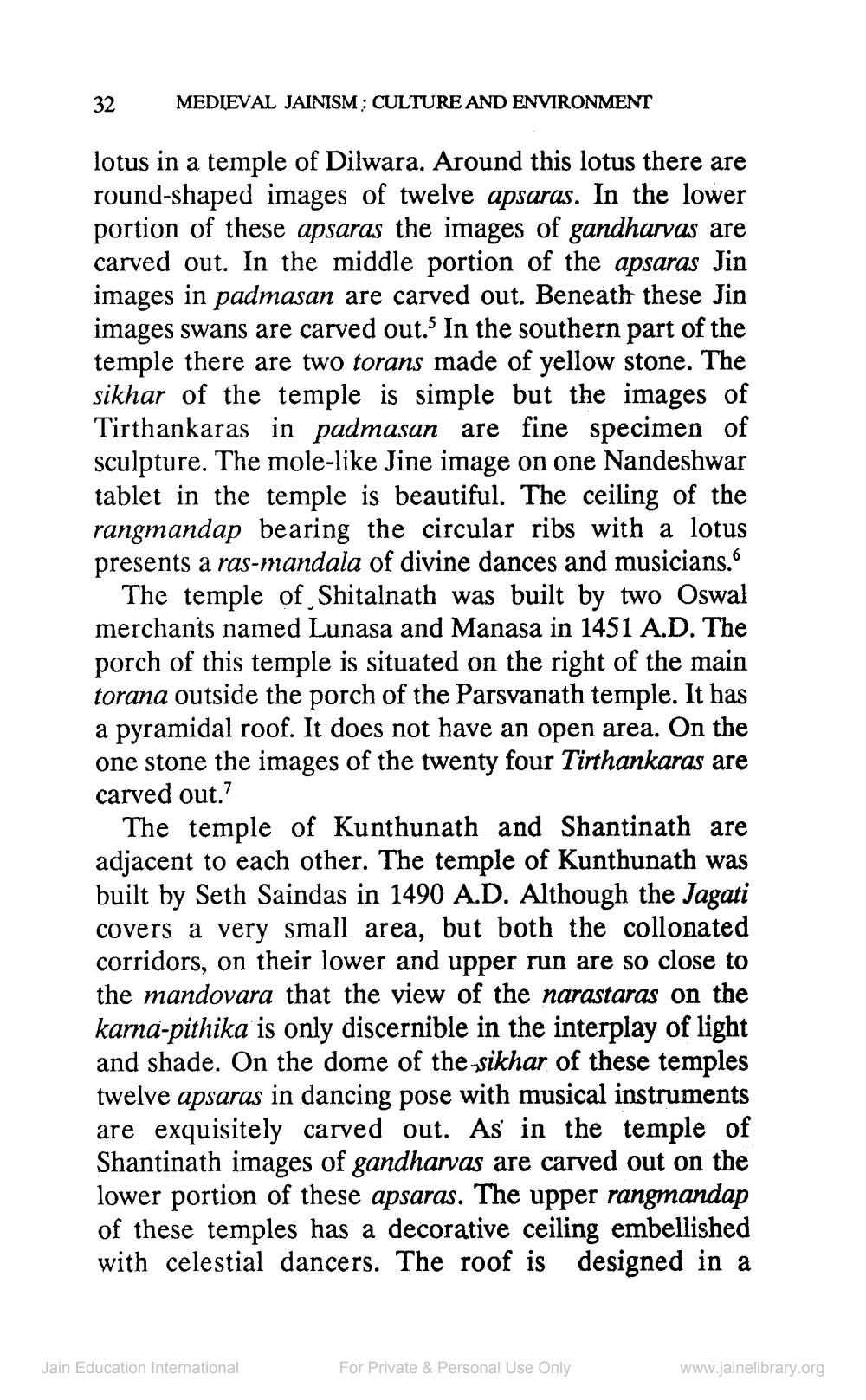________________
MEDIEVAL JAINISM : CULTURE AND ENVIRONMENT
lotus in a temple of Dilwara. Around this lotus there are round-shaped images of twelve apsaras. In the lower portion of these apsaras the images of gandharvas are carved out. In the middle portion of the apsaras Jin images in padmasan are carved out. Beneath these Jin images swans are carved out. In the southern part of the temple there are two torans made of yellow stone. The sikhar of the temple is simple but the images of Tirthankaras in padmasan are fine specimen of sculpture. The mole-like Jine image on one Nandeshwar tablet in the temple is beautiful. The ceiling of the rangmandap bearing the circular ribs with a lotus presents a ras-mandala of divine dances and musicians.
The temple of Shitalnath was built by two Oswal merchants named Lunasa and Manasa in 1451 A.D. The porch of this temple is situated on the right of the main torana outside the porch of the Parsvanath temple. It has a pyramidal roof. It does not have an open area. On the one stone the images of the twenty four Tirthankaras are carved out.?
The temple of Kunthunath and Shantinath are adjacent to each other. The temple of Kunthunath was built by Seth Saindas in 1490 A.D. Although the Jagati covers a very small area, but both the collonated corridors, on their lower and upper run are so close to the mandovara that the view of the narastaras on the karna-pithika is only discernible in the interplay of light and shade. On the dome of the sikhar of these temples twelve apsaras in dancing pose with musical instruments are exquisitely carved out. As in the temple of Shantinath images of gandharvas are carved out on the lower portion of these apsaras. The upper rangmandap of these temples has a decorative ceiling embellished with celestial dancers. The roof is designed in a
Jain Education International
For Private & Personal Use Only
www.jainelibrary.org




